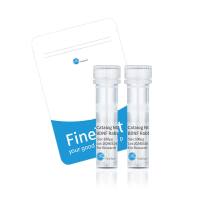Large-scale In Vitro Multiplication of Crataeva nurvala
互联网
379
Conservation and propagation of species using biotechnologic tools—such as plant tissue culture—are relevant when natural
propagation is hampered for various reasons. In vitro techniques allow mass multiplication and propagation under pathogen-free
conditions but also override dependence on season for availability of plant material. Moreover, in vitro genetic manipulation
of a species, invariably, requires a prestandardized tissue culture protocol for its multiplication.
To fulfill these requirements, efficient, cyclic, two-step protocols for micropropagation of the medicinal tree—Crataeva nurvala
—employing juvenile explants and those from mature trees, were developed. Both protocols can be employed at commercial scale.
The seedling-derived explants (e.g., cotyledonary nodes, epicotyl nodes, hypocotyl segments, first pair of leaves, cotyledons,
and root segments) developed shoots on Murashige and Skoog’s (MS) or the same supplemented with different concentrations of
6-benzylaminopurine (BAP). The epicotyl and cotyledonary nodal explants developed shoots on MS basal medium. Other explants
exhibited caulogenesis on BAP (0–2.0 mg/L) adjuvated media. The explants from in vitro regenerated shoots too exhibited a
similar caulogenic capability. Nodal explants from a 30-yr-old-tree, when cultured on MS medium supplemented with 0.5 mg/L
BAP, produced multiple shoots which elongated satisfactorily on the same medium. Similar to the microshoots developed from
the seedling derived explants, nodal and leaf explants from the microshoots regenerated from the mature explants too developed
shoots, thus making the process recurrent. Due to the recurrent nature of the protocol, over 5400 shoots may be produced from
a single nodal explant of an adult tree over a period of six months. The addition of casein hydrolysate significantly increased
the average number of shoots per explant. The regenerated shoots could be rooted on the medium supplemented with 0.02 mg/L
or 0.1 mg/L NAA (α-naphthalene acetic acid). Regenerated plantlets were acclimatized and successfully transplanted to soil.









